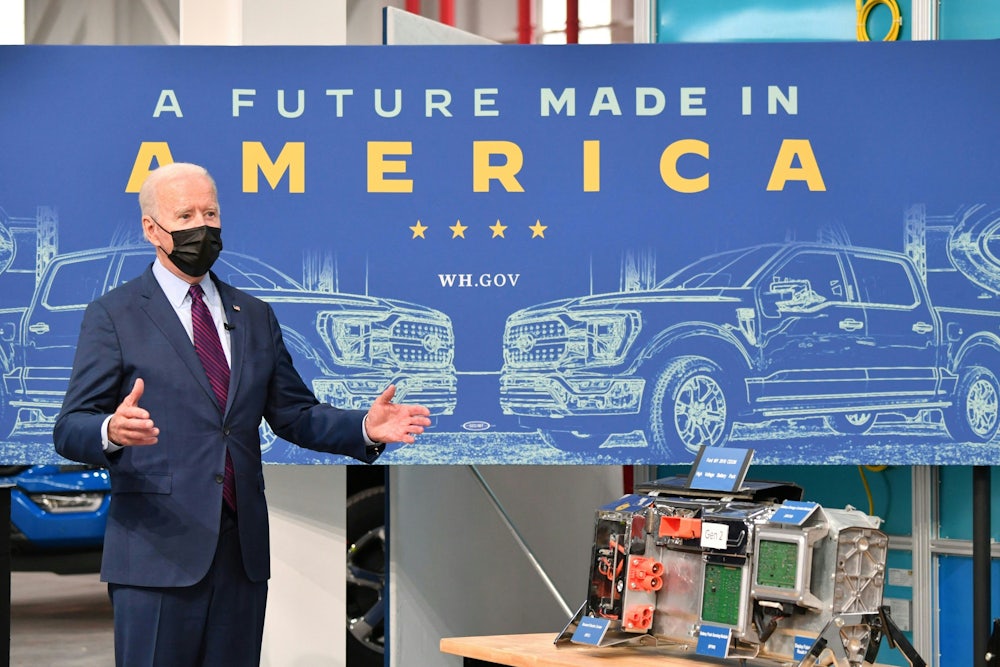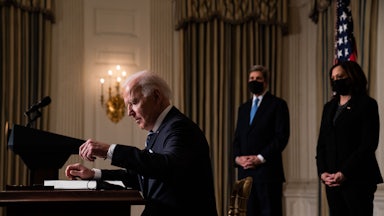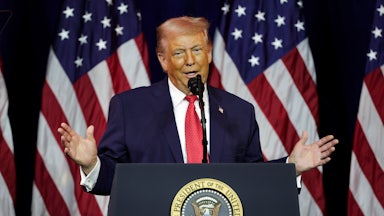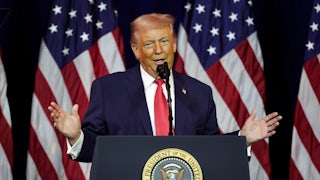Late last June, a fire broke out at an abandoned paper mill in the small town of Morris, about 60 miles south of Chicago. The firefighters who rushed to the scene discovered the plant’s warehouse contained an estimated 100 tons of lithium-ion batteries, as well as a “large quantity of lead/acid batteries, nickel cadmium batteries, solar panels, and other waste electronics,” according to the Environmental Protection Agency.
Residents within a half-mile radius evacuated to avoid the toxic fumes. It took nearly a week to extinguish the blaze. Firefighters didn’t use water or foam because those materials “can accelerate battery fires and cause environmental damage,” the EPA noted in its post-fire action memorandum. They eventually used Portland cement to entomb the smoldering ruins.
Jin Zheng, the president of Superior Battery, Inc., told a local reporter the day after the blaze broke out that he had planned to use the warehouse to charge new batteries before sending them on to customers. But the EPA, in its memorandum, listed at least 25 tons of “damaged, defective, or recalled lithium batteries” at the site, as well as “numerous pallets of e-waste.”
Batteries are the linchpin of the coming shift to electrical vehicle production, as well as renewable energy more broadly. Sensing a consumer groundswell in favor of vehicle electrification, most major auto manufacturers (with the exception of Toyota, which has a huge stake in hybrid vehicles) have now embraced E.V. manufacturing, triggering a possible revolution in the transport industry, which accounted for 29 percent of U.S. greenhouse gas emissions in 2019. General Motors, Honda, Volvo, and Audi have announced goals of ending production of gasoline-powered vehicles by the mid-2030s. Ford recently unveiled an $11.4 billion investment in Tennessee and Kentucky for E.V. assembly and battery manufacturing plants that will employ an estimated 11,000 workers. London-based consulting firm BloombergNEF predicts half of all new cars and trucks will be E.V.s in 15 years. Each will carry batteries containing at least 150 pounds of lithium, cobalt, nickel and manganese, given the current state of battery technology.
To meet those projections, production of the key metals in rechargeable batteries will need to soar an estimated five- to tenfold over the next decade. That has presented carmakers and other end users of these materials with a troubling set of environmental, social, and political challenges. A domestic battery recycling industry could go a long way toward meeting those challenges, generating hundreds of thousands of jobs across the country in the process. But it will take a far more aggressive policy agenda than anything proposed to date if this country is going to realize that potential.
Mining lithium requires huge amounts of energy and water. It leaves in its wake mountains of crushed rock or massive brine pits, depending on the form of extraction used. While underground reserves appear plentiful, extracting new supplies of the key raw materials in a lithium-ion battery raises the specter of replacing one form of environmental damage with another. A new Nevada lithium mine, approved in the waning days of the Trump administration, is already being opposed by local environmentalists, ranchers, and the Fort McDermitt Paiute and Shoshone Tribes, who say they were not adequately consulted prior to the Interior Department’s decision to issue the permit.
Meanwhile, more than 70 percent of the global supply of cobalt, the most expensive metal in the battery, comes from the Democratic Republic of the Congo, which has half the world’s reserves. Anywhere from 15 to 30 percent of the DRC’s cobalt industry consists of small mining operations, which routinely ignore mine safety and child labor standards, according to human rights activists. Frequent, bloody turf battles break out between the artisanal miners and security guards at the large mining firms that dominate the industry.

Layered on top of those concerns is the race to control this strategic industry. Voices inside the Biden administration point to the Chinese government’s heavy subsidization of its E.V. sector. In an echo of the U.S.-Japan trade wars of the 1980s, they worry that the world’s second-largest economy has taken the lead in developing the technologies that will drive the long-term competitiveness of the U.S. economy and ultimately affect national security. “The commercial and national defense markets … are distinct in their end-use applications and requirements, [but] are alike in their need for innovation and R&D,” a new “National Blueprint for Lithium Batteries, 2021–2030,” released last June, said. “Successful domestic production and reliable supply chains in both markets will be imperative.”
American conservatives are also starting to warm to the idea of nationalist industrial policy. A new report from the Hudson Institute warned that China now controls, either directly or indirectly, over 70 percent of the global lithium supply. Its firms refine 59 percent of the world’s lithium and produce 61 percent of the world’s metal-heavy cathodes that go into finished batteries.
The United States doesn’t need to adopt a neo-imperial, saber-rattling approach to Chinese E.V. technology or lithium supply chains to justify promotion of a domestic lithium-ion battery and e-waste recycling industry. Yet by making the battery industry more local and sustainable, recycling will eventually help address concerns on both the left and right.
The projected production of E.V.s over the next decade will inevitably require additional mining compared to today’s output. But within 10 or 15 years, recycling advocates say, the E.V.s being sold now will be headed for the scrap heap. Their batteries will provide a recoverable resource that can be used in the next generation of vehicles, which would sharply reduce U.S. dependence on newly mined metals. Moreover, that next generation will, if the solid-state and other technologies being developed in government-funded labs prove successful, require far fewer rare earth metals than the car batteries being produced today, and will significantly extend E.V. range.
“The idea of a circular economy, where we use things over and over again and limit what goes into landfills, is crucial to our energy independence,” Delaware Senator Tom Carper said at a recent forum sponsored by Li-Cycle, an Ontario-based recycler. “Its promise to help reach our greenhouse emission goals … should have bipartisan support.” The infrastructure bill passed by the Senate last summer included $6 billion to promote battery recycling and research and development in the field.
More than a dozen firms have entered the e-waste recycling arena in recent years, some with funding coming, ironically enough, from diversifying fossil fuel suppliers. Late last month, Li-Cycle attracted a $100 million investment from a Koch Investments Group affiliate. The company plans to break ground in Rochester, New York, this winter on a $175 million plant that will make manufacturer-ready metals from recycled batteries.
In Nevada, Redwood Materials, founded two years ago by Tesla co-founder Jeffrey Straubel, recently opened a recycling plant in Carson City and plans to raise $1 billion to invest in a nearby million-square-foot cathode manufacturing plant that will use its recycled lithium, cobalt, and other metals. “It’s both inspiring and terrifying to see so many nations and car companies announcing their shift to electric vehicles,” he told Bloomberg News. “But there’s a massive gap in what needs to happen.”
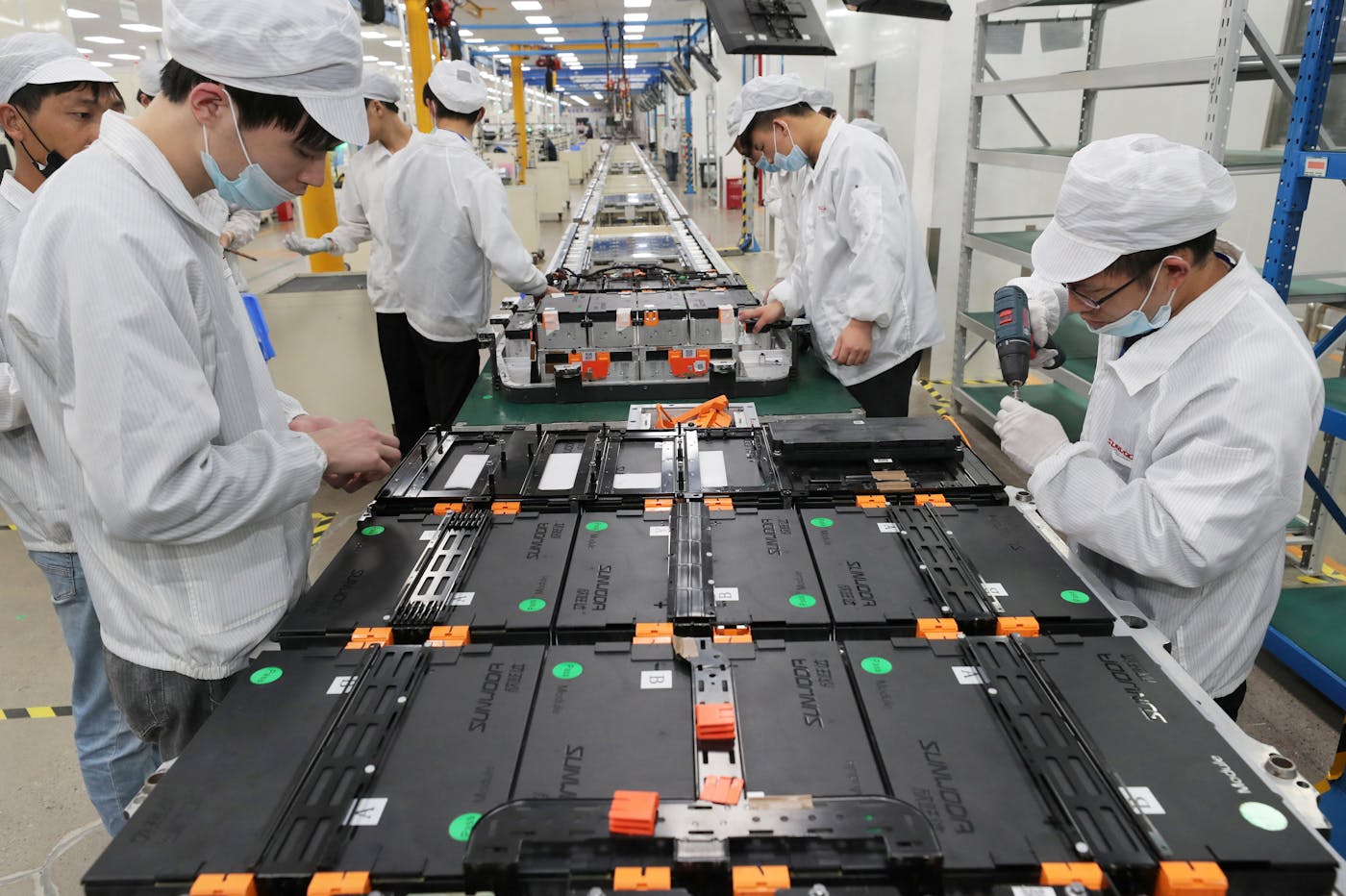
The financiers behind these ventures foresee the day when recycling will provide a significant share of the material needed for new batteries. Manufacturers do, too. “We’re focusing on how to get the recycling business aligned with the battery business so it flows right back into the battery,” said Pablo Valencia, a senior manager at General Motors. “It’s an opportunity rather than a problem that you have to push onto somebody else. It’s a game-changer.”
But, as the fire in Morris revealed, getting hold of the used batteries and safely extracting their component metals presents the nascent industry and policymakers with a new set of challenges.
Lithium-ion batteries, which first became commercially available in the early 1990s, are now ubiquitous in computers, cell phones, cameras, and other electronic devices. Worldwide, only about half those batteries are currently being recycled. The rest get thrown away or lie dormant within products no longer in use (like the old computers and cell phones gathering dust in people’s homes).
Most of the battery recycling taking place today is in China and Europe, which have far more stringent regulations than the U.S. The Energy Department estimates only 5 percent of America’s discarded lithium-ion batteries get recycled. Call2Recycle, a nonprofit consortium promoting battery recycling, counted collections of just over 1,000 metric tons in 2020, which is just 12 to 15 percent of rechargeable batteries available for recycling, a spokesperson for the organization said.
Analysts project the volume of old batteries available for recycling will grow exponentially in the coming decade, quadrupling to 700,000 metric tons by 2025 and nine million tons by 2040 as car battery recycling becomes fully operational. Given that the U.S. is the world’s largest economy, is consumer-driven, and loves its cars and gadgets, it no doubt will remain the world’s largest repository for recyclable scrap.
That presents start-up recycling firms in the U.S. with a huge opportunity. But they also face two huge problems: how to get their hands on the waste and how to process it cleanly and safely.
Most recyclers currently depend on end-use manufacturers for scrap. Li-Cycle, for instance, gets more than half of its scrap from the lithium-ion battery manufacturers in the automobile and electronics industries, CEO Ajay Kochhar said, a share that will grow to 70 percent by 2025. It has already signed scrap supply deals with GM, Mercedes Benz, LG, and Ultium Cells, which took over GM’s former Lordstown, Ohio, plant for battery cell manufacturing.
The materials lost in manufacturing (Kochhar compares it to the wood offcuts in furniture factories) are sent to its two rendering facilities in Kingston, Ontario, and Rochester (two more are under construction in Alabama and Arizona). The processing plants then use a water-based system for distilling a “black mass” of recoverable metals from the crushed scrap. Under Li-Cycle’s hub-and-spoke system, that intermediate will get sent to the planned Rochester plant for processing into the purified metals needed for manufacturing new batteries.
Redwood Materials and other start-ups in the scrap reprocessing industry, on the other hand, use incinerators to melt the scrap before separating it into black mass and waste plastics and other materials. Kochhar claims Li-Cycle’s technology is superior and can more easily garner community support because it doesn’t generate toxic air emissions. “Some people don’t want this in their backyard,” he told me. “We don’t have wastewater emissions; we don’t have anything thermal.”
Safety during the scrap collection process is another matter. An EPA report released in July documented that improperly handled scrap lithium-iron batteries caused 245 fires at 64 waste recycling centers in 28 states between 2013 and 2020. “There’s a lot of lessons to be learned from the Morris fire,” Kochhar said. “Local town and fire marshals have to know what we are storing, what are the risks, what’s the emergency response plan.”
This means regulations will need to be updated and rigorously enforced: Superior Battery hadn’t even bothered to get a permit for its storage facility.
The quantitative case for promoting recycling through nationwide policy is overwhelming: Recycling a ton of batteries eliminates five tons of carbon dioxide emissions and 96 tons of water use associated with mining, according to Kochhar.
The way to start is by stepping up the pace of consumer electronics recycling, which can be kick-started with expanded state and local requirements, which will build pressure for federal regulations. More than half of Europe’s discarded electronic products are already being recycled, according to the Waste Electrical and Electronic Equipment Forum, a coalition of 36 nonprofit groups from 25 nations that includes manufacturers that support comprehensive recycling programs.
Under pressure from the WEEE Forum and other environmental groups, the European Union this month is considering updating its regulations to mandate even more recycling. It wants to reach 65 percent of lithium-ion batteries recycled by 2025 and 70 percent by 2030, with at least 95 percent of the cobalt and 70 percent of the lithium in those batteries recovered at the recycling facilities.
The U.S., on the other hand, has no federal regulation, and none has been proposed. About half the states have laws encouraging e-waste recycling, but only two have included mandates. New York requires battery manufacturers to recover and recycle used batteries at no cost to consumers. California requires any retailer selling rechargeable batteries to have a system in place for collecting used batteries for reuse and recycling, also at no cost to consumers.
But that leaves most of the country without any systematic way of collecting or caring for the disposal of used electronic equipment carrying recyclable lithium-ion batteries. “Most of the used batteries are sitting in a drawer in peoples’ collections of cell phone history,” said Jeffrey Spangenberger, director of the ReCell Center, a DOE-funded recycling project headquartered at Argonne National Laboratories outside Chicago. “Or people are throwing them into recycling bins. The local recycling facilities can’t handle it, and fires break out.”
ReCell’s goal is to simplify the recycling process and make it less costly. Its current focus is on developing technologies for refurbishing the cathodes inside the individual cells inside lithium-ion batteries so they can be reused in new batteries, which would eliminate half the recycling process. As things stand now, most recycled black mass gets shipped abroad because three-quarters of all original battery production takes place in China.
“Without cathode manufacturing capabilities, recycling won’t do us much good,” Spangenberger said. “We can recover the raw materials that make new batteries, but it still will need to go around the world before it comes back to us because manufacturing and recycling go hand in hand.”
The Biden administration’s 100-day review, released last June, called for ramped-up public investment in next-generation batteries that reduce use of scarce materials, advance solid-state designs, and recover the materials in “spent” lithium-ion batteries. While the Senate-passed five-year, $1.2 infrastructure bill pours $6 billion into grants for battery manufacturing and material mining and processing projects, it includes just $200 million for research and development and demonstration projects in E.V. battery recycling. It also creates a $10 million fund for a DOE-sponsored lithium-ion battery recycling prize.
Sadly, the larger Build Back Better plan makes no mention of battery recycling. And given that some or all of its $150 billion in spending on climate-related programs may be sacrificed to win Senators Joe Manchin and Kyrsten Sinema’s votes, the U.S. is at serious risk of becoming an also-ran in this emerging industry. That would be a huge loss, and not just for the millions of Americans who depend on the auto industry for their livelihoods and need those jobs, since they face displacement by the shift to all-electric vehicles. It would harm overall U.S. competitiveness as we transition to a low-carbon economy. It will also be devastating for the environment, since it will keep the U.S. overly dependent on new mining. It will exacerbate the land rights and land use battles that are already forming over those mines. And lack of a strong regulatory structure would likely also make whatever recycling programs spring up on their own less safe. There’s no part of America’s decarbonization effort that wouldn’t benefit from a better battery recycling program—and no part of that effort that won’t be damaged if we fail to set it up.
